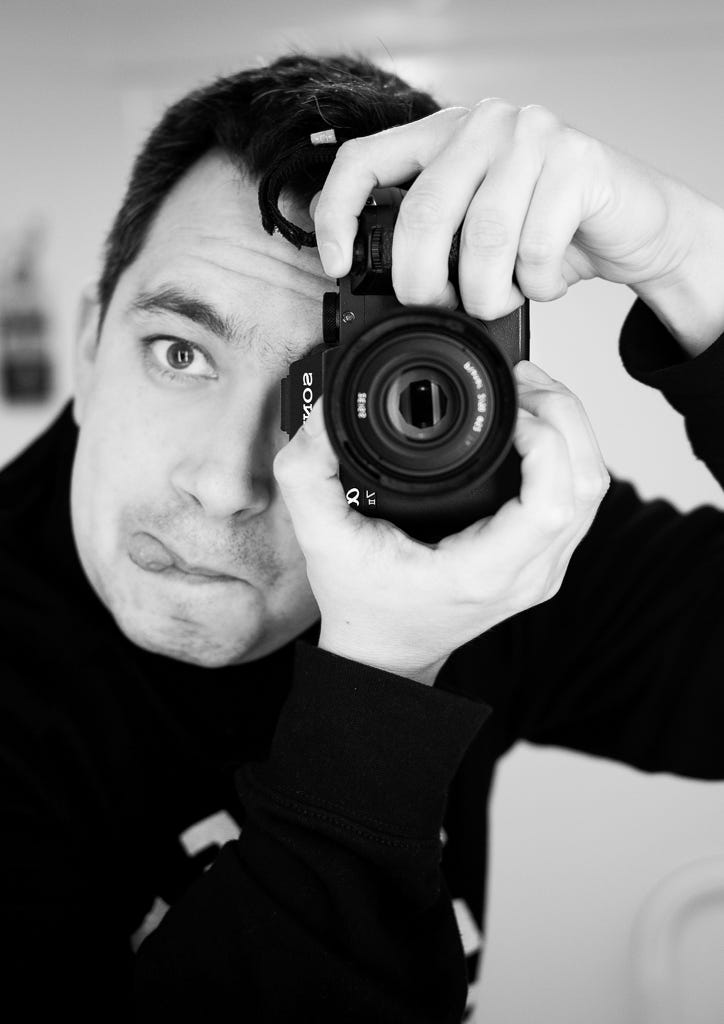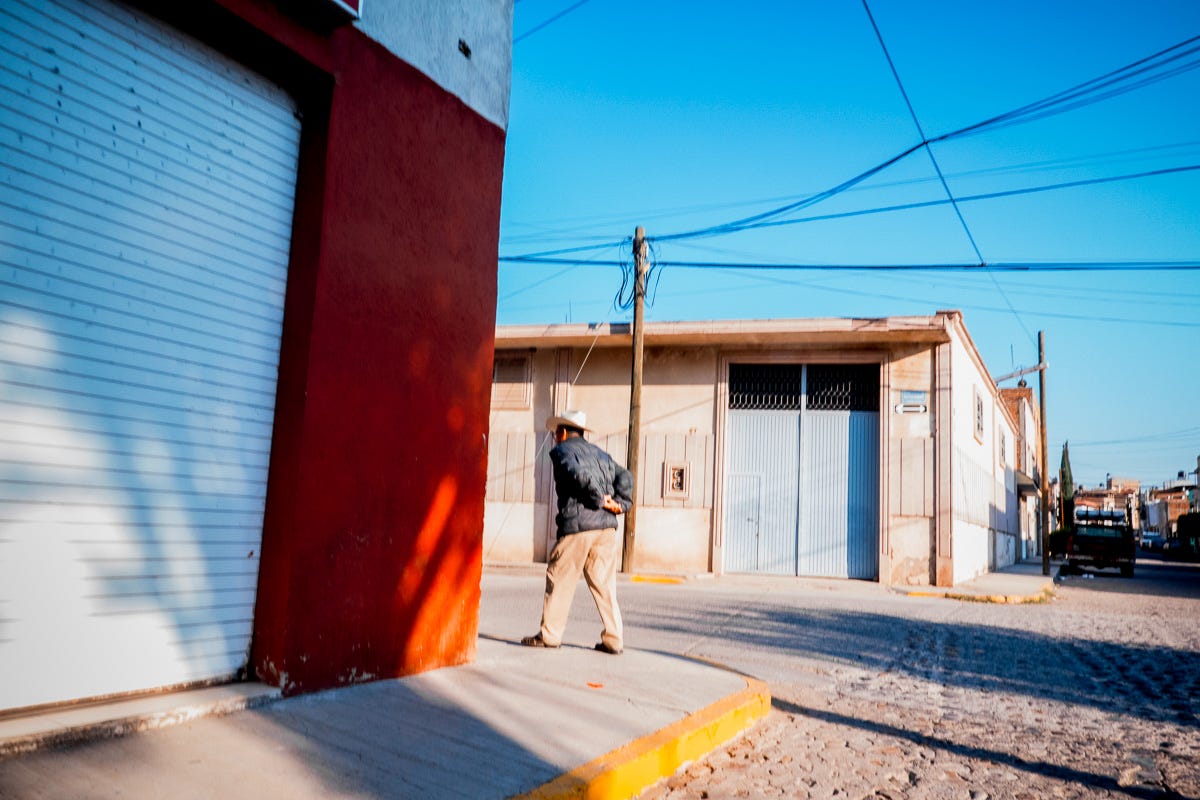The Dark Rooms of... Xavier Buendia
The Dark Rooms of... is an interview series in which a photographer talks about his or her darkrooms, the digital and the mental, or technical and inspirational. What makes you click?
In this edition of The Dark Rooms of… we focus on Mexican lifestyle & food photographer Xavier Buendia.
By the way, if you haven’t read the previous 8 interviews, you can find them in the archive.
Here we go.
Who are you?
Hi, I’m Xavier Buendia, I am 41 and I’m a photographer originally from Mexico City now established in Brighton, U.K. since 2009.I work full time as a freelance photographer for the food and lifestyle industry and on my free time I like to work on personal projects and series.
Also, I do some teaching and mentoring for emerging photographers and artists who either want to start a commercial career or feel that they’re stuck in their career and need a different perspective.
Before we start, I want to thank you, Marcel for giving the opportunity to be on this space!
Technical
Do you think technique is important?
Yes, absolutely! At least to me, to the work I produce and the work I like to look at but it’s not essential though. Photography it’s a melting pot of ingredients thrown into your own personal mix.I believe that technique should be part of your fundamentals when you start photography, but later, when you’re comfortable with the fundamentals, throw in creativity and emotion and you’ll start making photographs instead of just taking them.
I think Cartier-Bresson referred to the first 1000 photos as to learn your technique first.
What equipment do you use?
Something that I love and works for me! (Nervous laugh)I don’t think equipment is important more than what you do with it.
Lenses are more important to me than bodies. I like the visual signature and quality of certain glass.
For my personal work I use a compact Sony RX100. I just love how it renders colour in bright sunlight and how much contrast the lens gives me in overcast days. It’s not the sharpest but I know how to get the best out of it for what I need.
I’m waiting on a Q3 but I’m terrified we’re not going to get on.
For my commercial work I use Zeiss Lenses 25mm & 40mm and a Sony 90mm G because it’s ridiculously sharp for product and portrait. I use a Sony full frame mirrorless body.
And what software?
Adobe Camera Raw mostly and Photoshop when there’s a fair bit to retouch.I also use Silver FX for Black and White conversions.
And InDesign to make the layout and design of my zines.
I don’t like to spend too much time on the computer; this is also why technique is important, if you nail your exposure, depth, and composition, then half of the job is done; apply the preset and fine tune and you’re done.
I constantly come across photographers who go out and shoot with a “that would do, I’ll photoshop it later” attitude. This saddens me because they lack discipline in their craft.
How do you edit your photos?
I think you’re referring to retouching, right?I create presets for projects and clients on Adobe Camera Raw, then I adjust the sliders depending on the quality of the light, the contrast and the color saturation.
If you refer to editing as in selecting work, that’s my weakest part of the process since I tend to select more frames than needed. I’m awful at editing my own work so I usually ask for second and third opinions on what makes the cut.
Inspirational
Where lies your heart?
That’s a great question, since lockdown when everything stopped, I started questioning this.I love light, I’m attracted to bright, direct sunlight and the effects it has on our urban landscapes, especially; I also love architecture (brutalist, modernist, art deco, functional, post-modern) and I like to pay attention to textures, shapes and forms and how humans interact with the spaces we live in but I don’t photograph people on purpose. I use them as a prop to the frame.
I like to think that my work, overall is observational and meditative. I like to go out on the streets, on my own, preferably out with the first rays of light and observe what’s going on with the urban spaces, details, scenes, how a city or village comes alive. There is some calmness in the mornings that people generally don’t perceive because they need to get on with their busy lives… It’s not street photography, I’m not a street photographer though and I don’t like the term or anything that goes with it.
I also like to tell stories of people in their work environment like artists, jewelers, brewers, butchers… anything that requires a skill and a high level of focus. In my commercial work I get the chance to document and tell these stories visually… That’s my favorite part of the job!
Do you have your own style or signature?
Maybe, I don’t know. I don’t think I’m there yet; this can take a lifetime to achieve and is not as simple as photographing the same thing over and over. Having your personality shine through your work I think it’s the ultimate goal of any artist but it’s not that easy.I like to think that I’m just starting to find my interests after spending a decade photographing all sorts of things and that I’m now polishing and refining what speaks for me through my work. Ask me the same maybe in 10 years from now and we’ll see where I’m at.
Where do you get your inspiration from?
Everywhere and anywhere! Art, podcasts, TV, urban culture, conversations, books, dreams, you name it.Photo-books and exhibitions are a huge source of inspiration.
Does your project start with an idea or with a loose image?
It can be both.If something resonates in my head and I start visualizing a series of photos, then I’ll try to turn it into a project, most of the times it doesn’t work or is not strong enough so I move on to the next idea.
Other times, I get obsessed over an idea and I work around it like right now, I started watching these videos from an Instagram account about Rome’s most unknown corners. I’m planning to spend 3 weeks in January photographing these spaces.
Other times, I just gather photos from meditative photo-walks and I start finding links or a pattern and over the years it becomes a series like “My Morning Walks” which I’m publishing around this time.
When is your project finished?
It depends, if it’s a story, when I think we have all parts of the story-telling covered and when the editing shows a strong and cohesive body of work. Other times, I like to leave them open because one day there might be a conclusion or I might take it back and add to it.
During your project, do you already know how it ends?
No, I like the stories to develop organically and see where the project takes me.
What is your favorite photo and why?
From another photographer, right now, it’s Graciela Iturbide’s “Mujer Angel” (Angel Woman) from her series of an indigenous group that like in the dessert. Look it up, it’s a picture of a woman walking into the frame with a radio in her hand and the mountains in the background. It reminds me of home in Mexico, my people, my culture, its sounds and smells, it’s very emotive.Mine, it’s the photo I’m attaching for this feature which I took in San Miguel el Alto, Jalisco while on a personal exploration trip to Mexico at the beginning of this year. It represents what I like to see and feel while I’m out with a camera.
Future
What do you want to achieve
Inner peace! Haha.It would be nice to make a photo-book at some point; either self-published or with a publisher. Start exhibiting my work and start integrating my personal work into the business model that I have for my commercial work and be able to live from it. Right now 100% of my income is from my commercial work so I’d like to change that to a 60% commercial, 40% art and personal. Hard, but not impossible.
Then, continue working on my personal projects for as long as I can and grow my Substack creating a community of fellow creatives and readers interested in my work.
I love helping others getting where they want to be so continue teaching and mentoring at a personal, one to one level.
And keep getting inspired by others, I really like art and photography so I enjoy reading what others are producing like your Darkrooms Magazine for example, that’s a great platform to discover new work.
What do you want to know from others? You may ask one photographer one question. What would that be?
What moves you as a photographer, what’s your motivation to grab a camera, what do you feel when you’re taking a photo?
Where can we see more
On my website: https://www.xavierbuendia.com/On my socials: @xavogram for commercial & @xavografica for personal
You can follow my personal work and photo-essays here on Substack: Xavografica
That’s it for this newsletter
Do you like this interview? Do you want to see more? Send my some suggestions for photographers you like to see interviewed at Darkrooms. Of course you can suggest yourself if you have an interesting story to tell.
Till next time,
Like these interviews? Lucky you, there’s 8 more of them in the archive.
DARKROOMS is a reader-supported, weekly photography newsletter. If you enjoy this newsletter, the best way to help it grow and support me is by becoming a free subscriber to receive new posts (or upgrade to support my work)








Thanks for sharing the interview - it's great to read more about the very talented Xavi and his approach to photography.
Great interview! Looking forward for more